Latin name: Asparagus
Category: perennial herbaceous plants
Birthplace: South Africa, Madagascar
Asparagus - extraordinary lace grace and charm
Asparagus (Asparagus) is a numerous genus, uniting about three hundred cultures with an absolutely perse external outline, in the Asparagaceae family.
Homeland for asparagus are South American soft subtropics, savannas of the African continent, Eurasia.
What does asparagus look like? A perennial evergreen herbaceous culture can be represented as a shrub or a liana with branching shoots on which pinnate or needle leaves are densely located.
Asparagus has a curious feature - the work of these small underdeveloped leaf-flakes is carried out by reduced (modified) shoots, which are called cladodia.
The hare chill blooms with small, inconspicuous flowers of a white or pale pink hue that appear from the axils of the leaves along the entire length of the pagons. The flower is a simple perianth on which six leaves rise in a circle in two tiers. This unusual beauty has a fragrant smell. An interesting point is that heterosexual flowers are found on one bush. After self-pollination, fruits appear in the places of withered flowers - red or black-and-blue six-parted berries. They are poisonous.
The root system of asparagus is formed from nodules, which allows the plant to store moisture as well as nutrients to survive in harsh arid environments.
This undemanding and unpretentious culture to the rules of cultivation has long been very popular among flower growers and gardeners. How does asparagus grow? This amazing plant has a wide range of cultivation: these are unpretentious indoor plants that can fit into any interior of an apartment, office. It can take on the responsibility of a single specimen and can perfectly coexist with other plants. Flower compositions with the addition of asparagus with sharp-nosed shoots to their composition look elegant and charming.
Feels great on personal plots as an agricultural vegetable. Certain varieties of asparagus can be found in culinary recipes. What is the benefit of asparagus? White asparagus variety has nutritional properties and delicate taste.
More useful properties with the presence of chlorophyll are endowed with a variety of green asparagus.
It has a grassy taste, retains its vitamin properties with proper preparation. By consuming this culture regularly, people can slow down the aging process of their body, saturate their skin with oxygen, and increase their vitality. A variety of purple asparagus with a delicious bitterness is also edible.
Asparagus benefits and harms are widely known. Traditional healers attribute to asparagus the ability to influence the reduction of pressure, vasodilation, maintenance of human vision and heart muscle, and partially solve problems with constipation. Attentive to the use of asparagus in the diet should be people who have sick kidneys, stomach and intestines.
Asparagus species
Pinnate Asparagus (Asparagus plumosus)
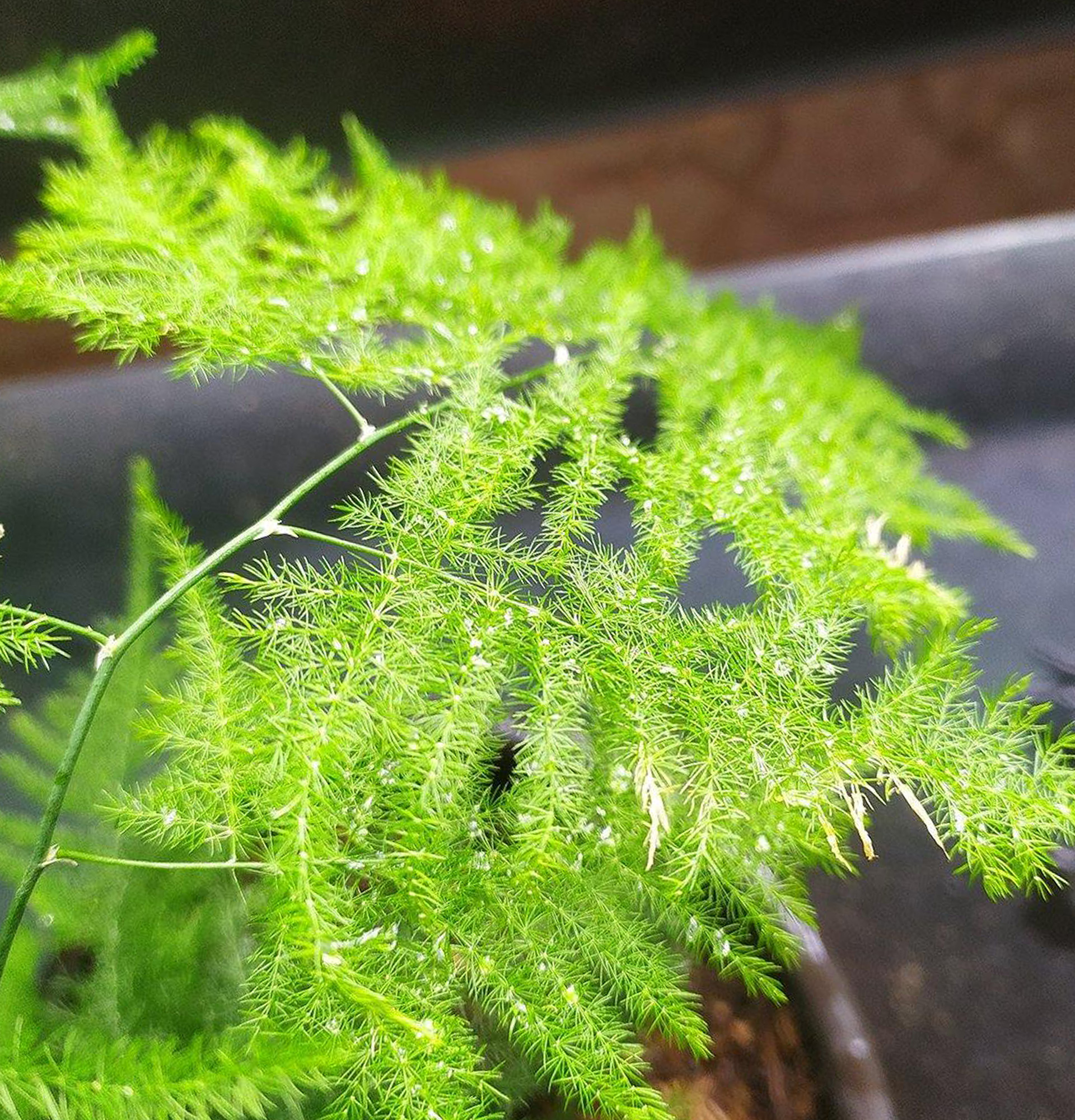 Tropical and subtropical Africa is considered the homeland for this species. Asparagus plumosus is a semi-shrub culture with smooth branching shoots, decorated with scaly triangular, up to 1.5 cm long, phyllocladia leaves of a curved configuration. Under natural conditions, you can admire miniature white flowers, single or collected in inflorescences. As a result of natural pollination, the hare chill flower acquires dark, black and blue fruits with three seeds. This species can be perfectly represented as garden asparagus. The dwarf form of asparagus pinnate is grown by amateur flower growers in the form of an ampelous plant to improve the interior of office and residential premises.
Tropical and subtropical Africa is considered the homeland for this species. Asparagus plumosus is a semi-shrub culture with smooth branching shoots, decorated with scaly triangular, up to 1.5 cm long, phyllocladia leaves of a curved configuration. Under natural conditions, you can admire miniature white flowers, single or collected in inflorescences. As a result of natural pollination, the hare chill flower acquires dark, black and blue fruits with three seeds. This species can be perfectly represented as garden asparagus. The dwarf form of asparagus pinnate is grown by amateur flower growers in the form of an ampelous plant to improve the interior of office and residential premises.
Asparagus the thinnest (Asparagus benuissimus)
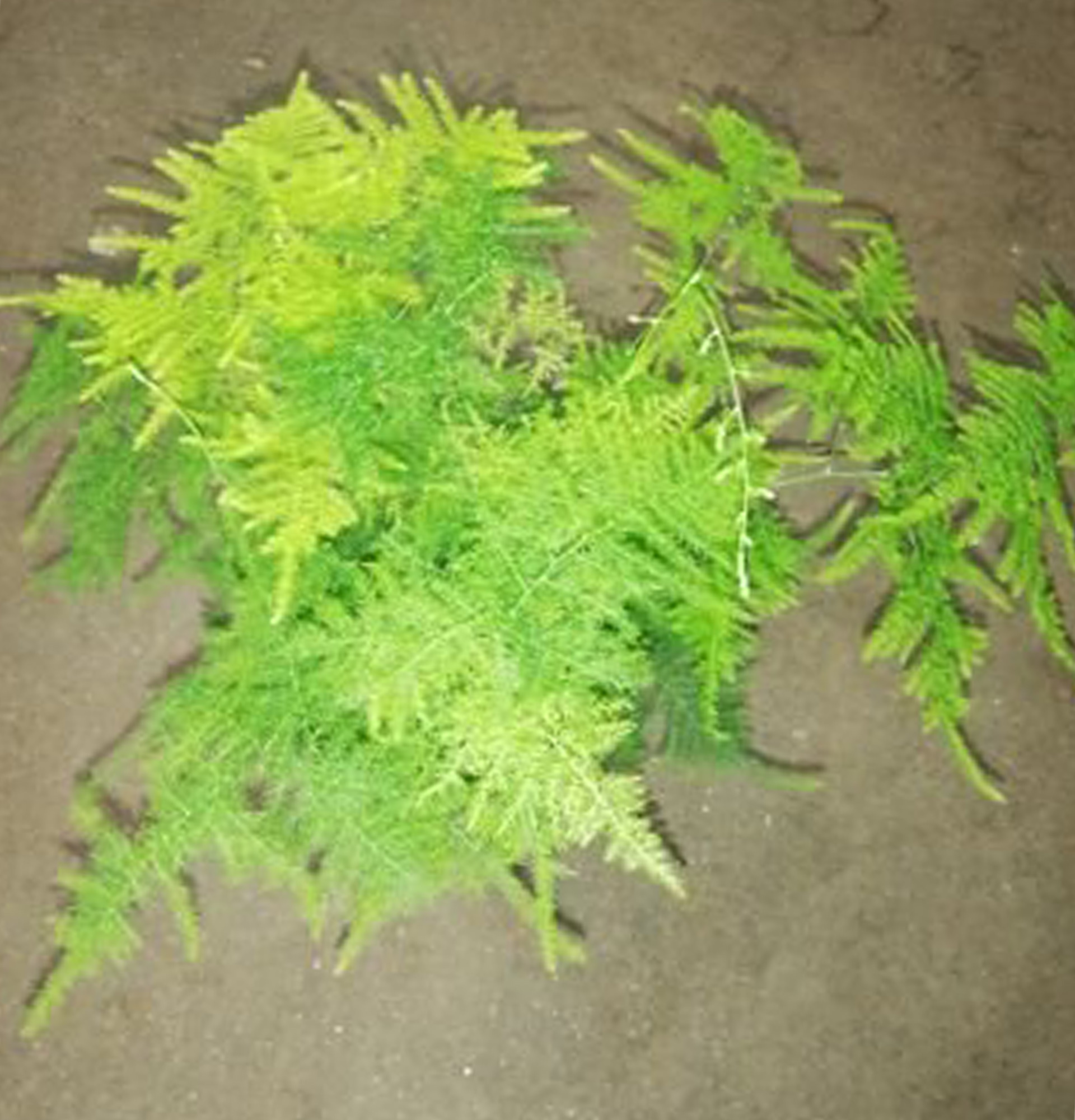 In many respects, this species is similar to asparagus pinnate. The contrasting difference can be immediately seen in the more massive shoots reaching half a meter in height. It has longer, but not very densely spaced phylloclades.
In many respects, this species is similar to asparagus pinnate. The contrasting difference can be immediately seen in the more massive shoots reaching half a meter in height. It has longer, but not very densely spaced phylloclades.
Asparagus asparagus (Asparagus asparagoides)
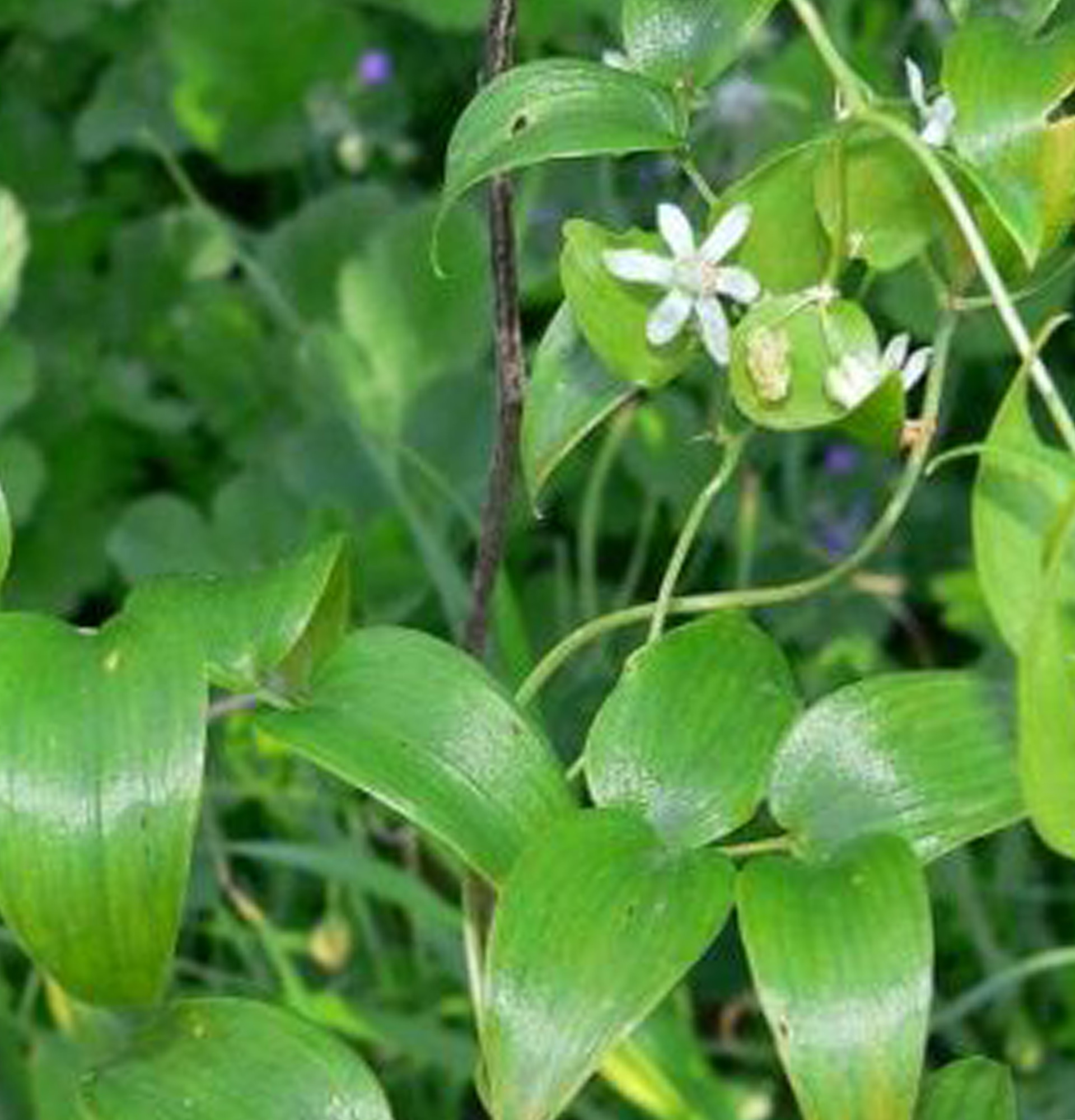 South African native. Looks great in hanging pots. It has smooth stems of light green on which thin, glossy egg-shaped leaf-shaped shoots are located. In nature, you can admire the small white flowers. The result of flowering turns into orange-red berries with a pleasant citrus aroma.
South African native. Looks great in hanging pots. It has smooth stems of light green on which thin, glossy egg-shaped leaf-shaped shoots are located. In nature, you can admire the small white flowers. The result of flowering turns into orange-red berries with a pleasant citrus aroma.
It can reach a height of up to 2.5 meters and has long, thin, needle-like leaves that hang from the branches. The plant is known for its ability to spread quickly and cover large areas.
Asparagus asparagoides is often used in landscaping as a green hedge or to create shaded corners in the garden. In addition, its long, strong leaves are used to weave baskets, carpets, and other crafts. Asparagus asparagus is considered an invasive species in some countries as it can outcompete native plants and have a negative impact on the ecosystem. However, in moderation, the plant can be a useful and beautiful addition to the garden.
Sprenger Asparagus (Asparagus Sprengeri)
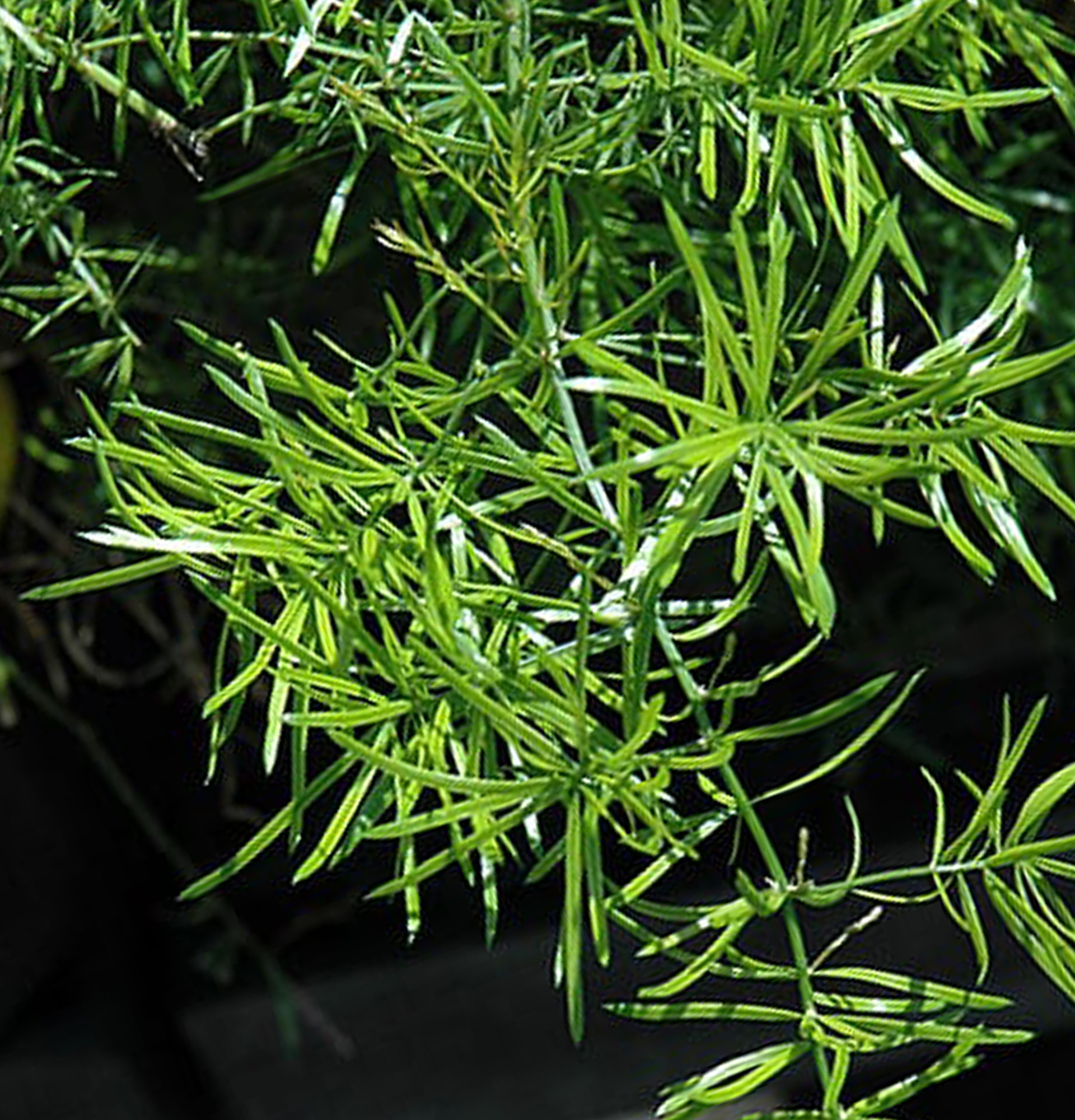 It has the appearance of a light-loving, branched, semi-shrub or herbaceous perennial. Flower lovers also call it dense-flowered asparagus, Ethiopian asparagus or Vivaldi's asparagus Sprenger. The length of the lodging stems of this beautiful indoor plant can reach fifty centimeters. Needle-shaped three-centimeter cladodes of an expressive green color and small four-centimeter scale leaves adorn the stems. Ethiopian Asparagus blooms with very unattractive, but unique whitish or creamy flowers with a delicate smell. Asparagus fructifies with densely flowered red round berries with one seed.
It has the appearance of a light-loving, branched, semi-shrub or herbaceous perennial. Flower lovers also call it dense-flowered asparagus, Ethiopian asparagus or Vivaldi's asparagus Sprenger. The length of the lodging stems of this beautiful indoor plant can reach fifty centimeters. Needle-shaped three-centimeter cladodes of an expressive green color and small four-centimeter scale leaves adorn the stems. Ethiopian Asparagus blooms with very unattractive, but unique whitish or creamy flowers with a delicate smell. Asparagus fructifies with densely flowered red round berries with one seed.
Asparagus falcatus
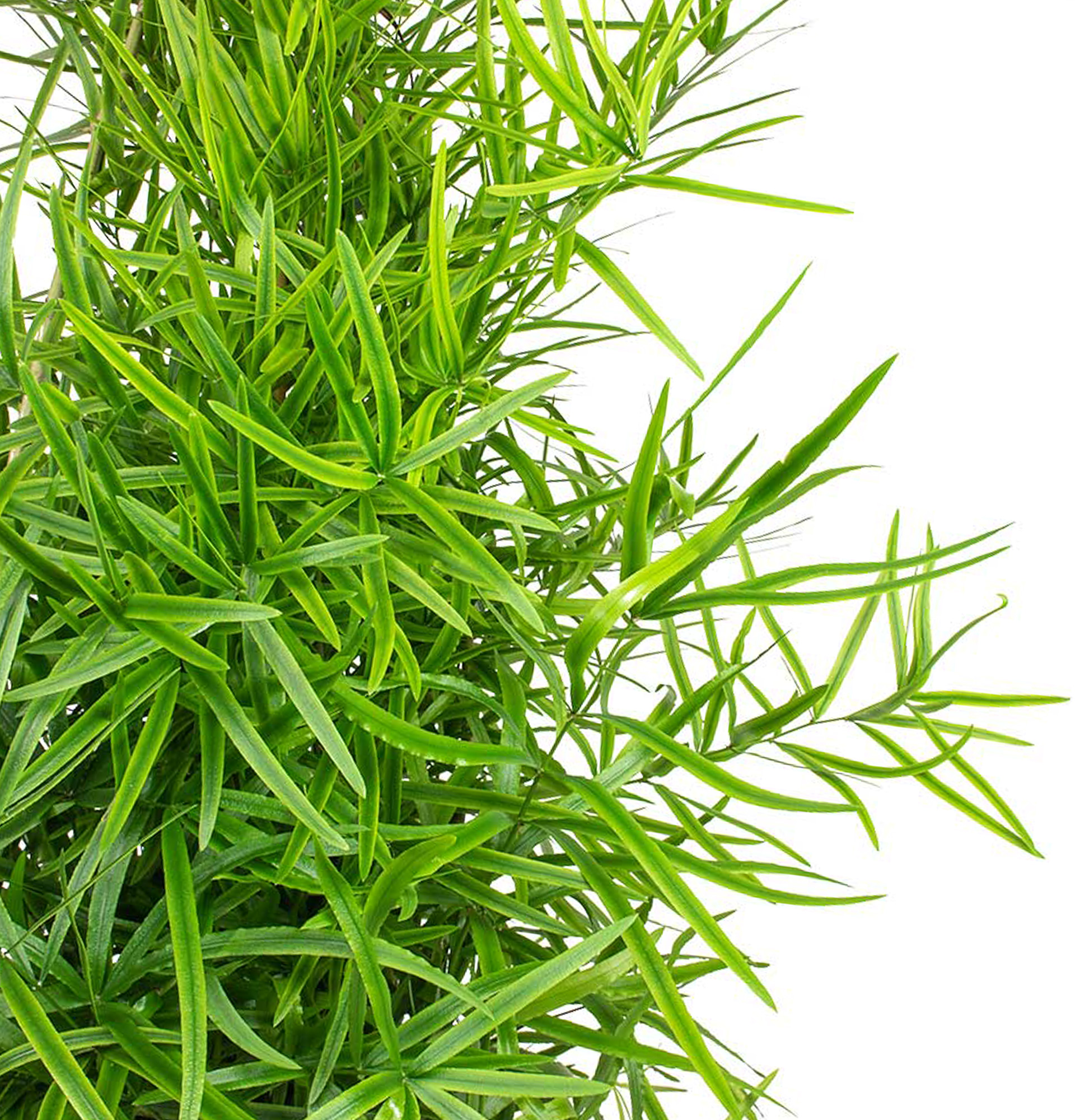 The mountainous territories of Asia are the birthplace of this huge shrub or creeper. The length of lignified shoots in natural conditions can reach fifteen meters, and the thickness - up to one meter. Asparagus falcatus looks great in greenhouses and living quarters. Here, the height of an unpretentious plant is limited to two meters. Crescent-shaped eight-centimeter cladodes with corrugated edges are located on the stems. In natural nature, the plant pleases with a delicate fragrance of white flowers collected in inflorescences.
The mountainous territories of Asia are the birthplace of this huge shrub or creeper. The length of lignified shoots in natural conditions can reach fifteen meters, and the thickness - up to one meter. Asparagus falcatus looks great in greenhouses and living quarters. Here, the height of an unpretentious plant is limited to two meters. Crescent-shaped eight-centimeter cladodes with corrugated edges are located on the stems. In natural nature, the plant pleases with a delicate fragrance of white flowers collected in inflorescences.
Asparagus meyeri
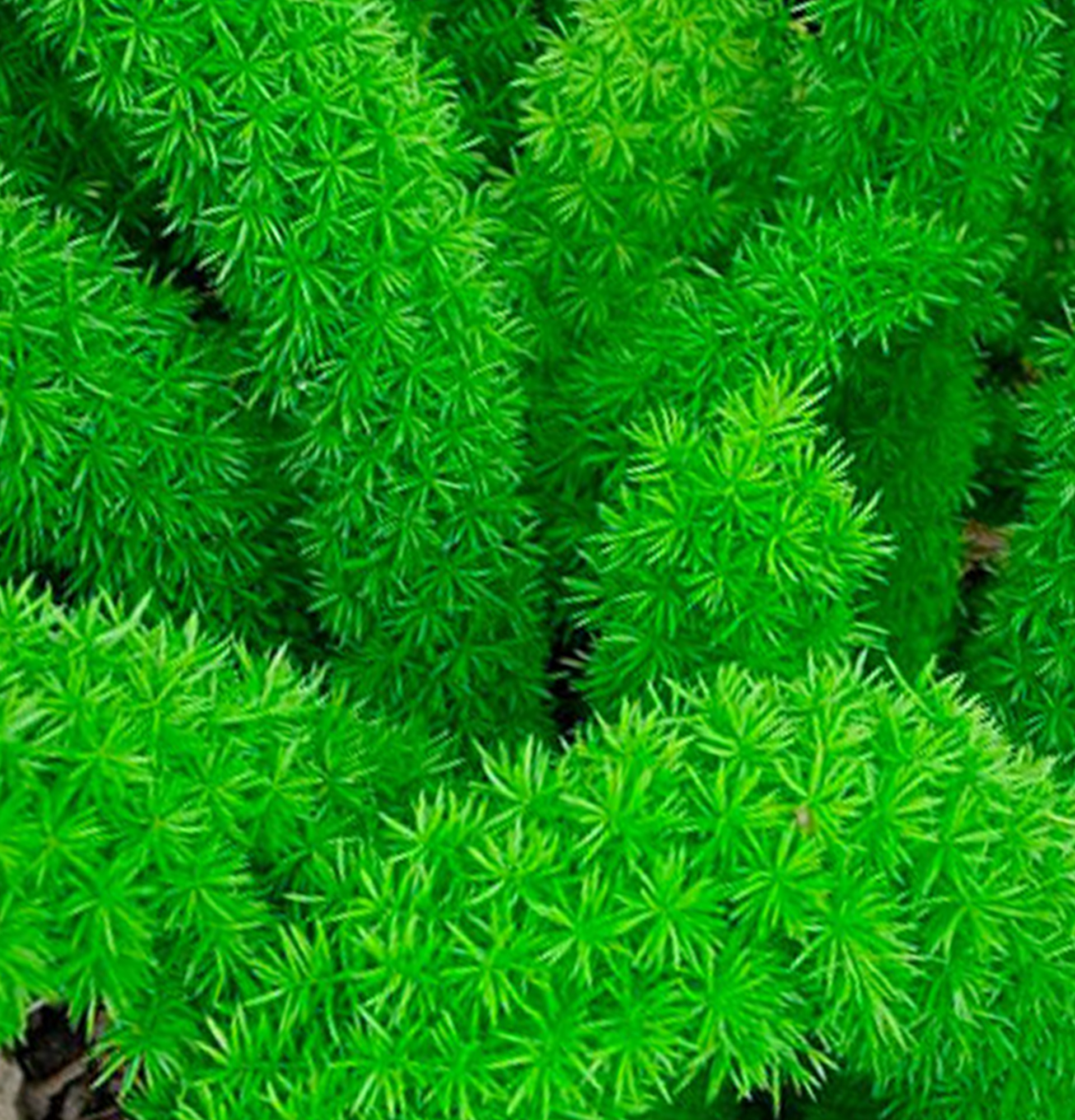 A bushy lush, very decorative, evergreen culture with pubescent half-meter stems and a dense arrangement of cladody needles on them. The popularity of this type of asparagus among flower growers is unlimited. An unpretentious indoor flower will green and refresh the interior of any area. Florists include this fluffy miracle in cut bouquets and various arrangements with fresh flowers.
A bushy lush, very decorative, evergreen culture with pubescent half-meter stems and a dense arrangement of cladody needles on them. The popularity of this type of asparagus among flower growers is unlimited. An unpretentious indoor flower will green and refresh the interior of any area. Florists include this fluffy miracle in cut bouquets and various arrangements with fresh flowers.
Asparagus Umbelatus
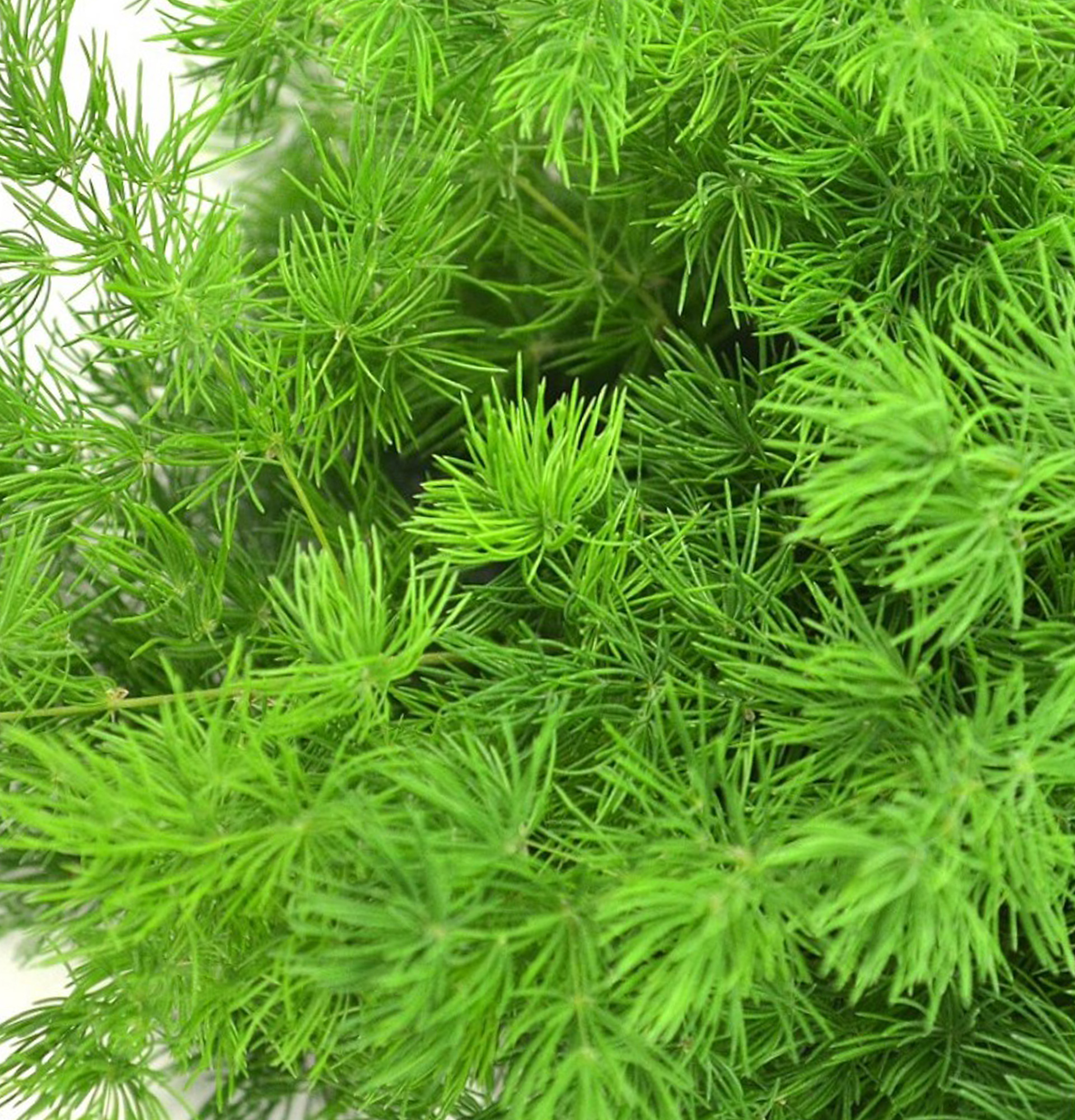 A very original, decorative, frost-resistant variety with firm, upright stems, the tops of which are decorated with long needles, creating an umbrella association. This was the reason for the second name - umbrella-shaped. In cool regions, it survives well in winter in open areas. This street asparagus loses its green pagons in winter, and with the onset of spring heat, young powerful stems grow.
A very original, decorative, frost-resistant variety with firm, upright stems, the tops of which are decorated with long needles, creating an umbrella association. This was the reason for the second name - umbrella-shaped. In cool regions, it survives well in winter in open areas. This street asparagus loses its green pagons in winter, and with the onset of spring heat, young powerful stems grow.
Asparagus Tree Fern
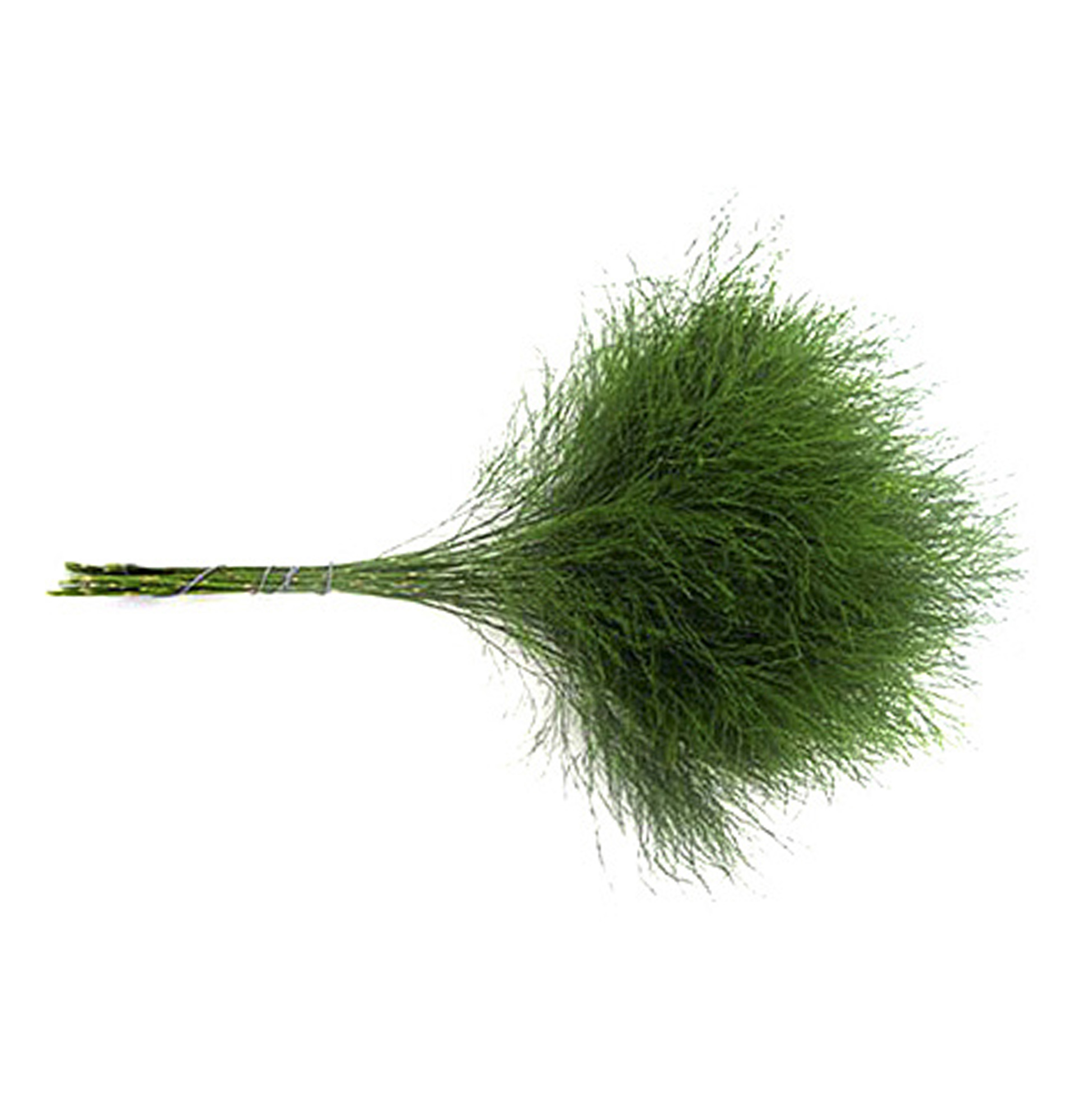 Amazing, oversized, delicate thanks to the graceful lacy dark green leaves, the houseplant is in demand among flower growers and florists. It is a wonderful decoration and vertical gardening of any interior. Asparagus Trifern is an original winter-hardy variety that grows with pleasure in gardens and squares and is a street perennial asparagus.
Amazing, oversized, delicate thanks to the graceful lacy dark green leaves, the houseplant is in demand among flower growers and florists. It is a wonderful decoration and vertical gardening of any interior. Asparagus Trifern is an original winter-hardy variety that grows with pleasure in gardens and squares and is a street perennial asparagus.
Asparagus pyramidal (Asparagus pyramidalis)
 This extraordinary indoor decorative culture, reaching a height of one meter, and in a circumference - fifty centimeters, with fluffy stems and dark green foliage, ascending upwards.
This extraordinary indoor decorative culture, reaching a height of one meter, and in a circumference - fifty centimeters, with fluffy stems and dark green foliage, ascending upwards.
Common asparagus (Asparagus officinalis)
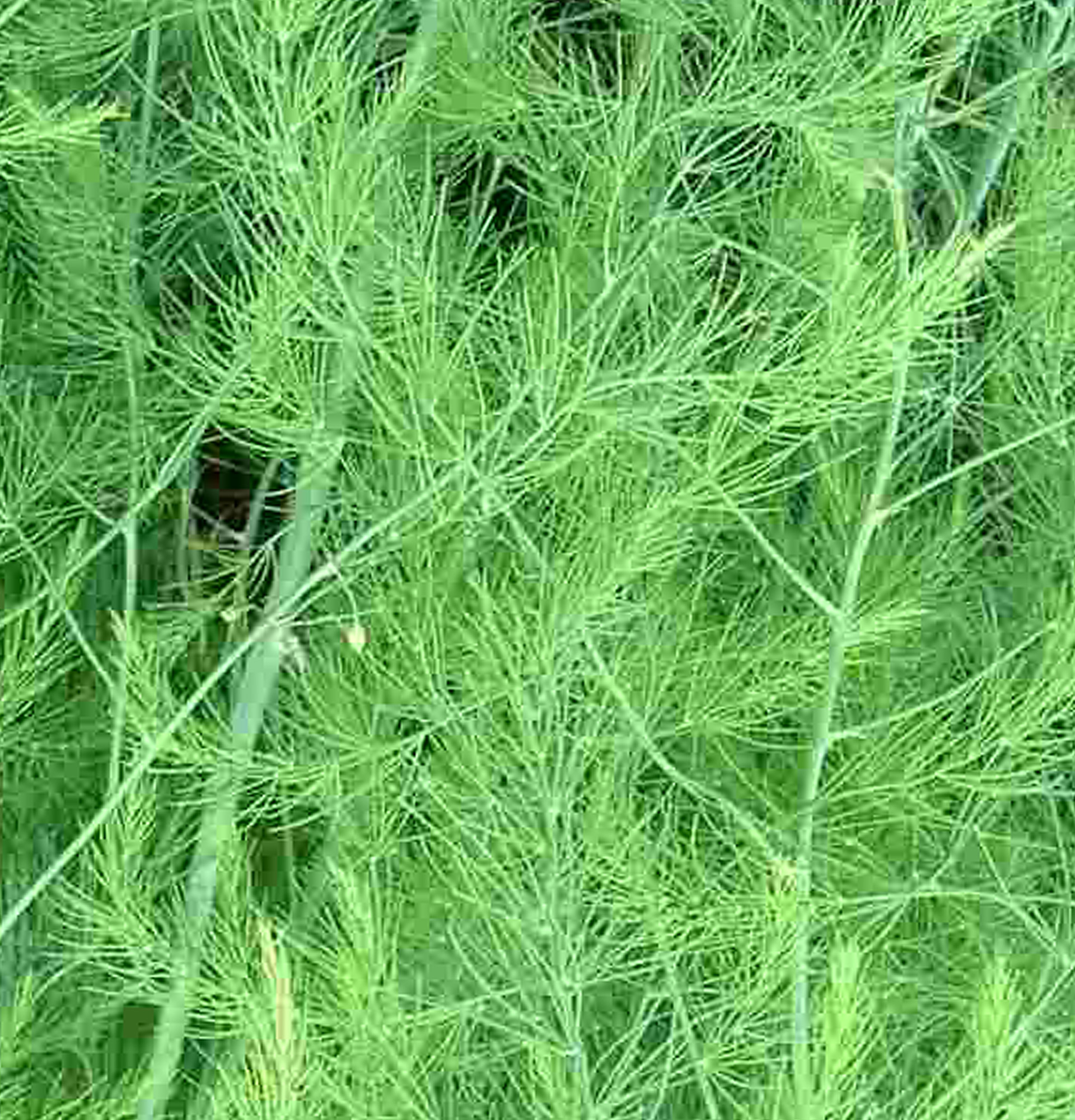 This herbaceous perennial with straight, hairless, smooth stems, the height of which reaches one and a half meters, is also called medicinal asparagus or pharmacy asparagus. After all, asparagus and asparagus are one and the same. The plant has narrow thread-like three-centimeter cladodes, growing in bunches. The flowers are bisexual, yellowish-white in different sizes. In autumn, the bush is decorated with round red berries.
This herbaceous perennial with straight, hairless, smooth stems, the height of which reaches one and a half meters, is also called medicinal asparagus or pharmacy asparagus. After all, asparagus and asparagus are one and the same. The plant has narrow thread-like three-centimeter cladodes, growing in bunches. The flowers are bisexual, yellowish-white in different sizes. In autumn, the bush is decorated with round red berries.
Homeland - North Africa. This crop is well suited to temperate climates, excels in open areas and is well known as garden asparagus.
Asparagus medeoloides
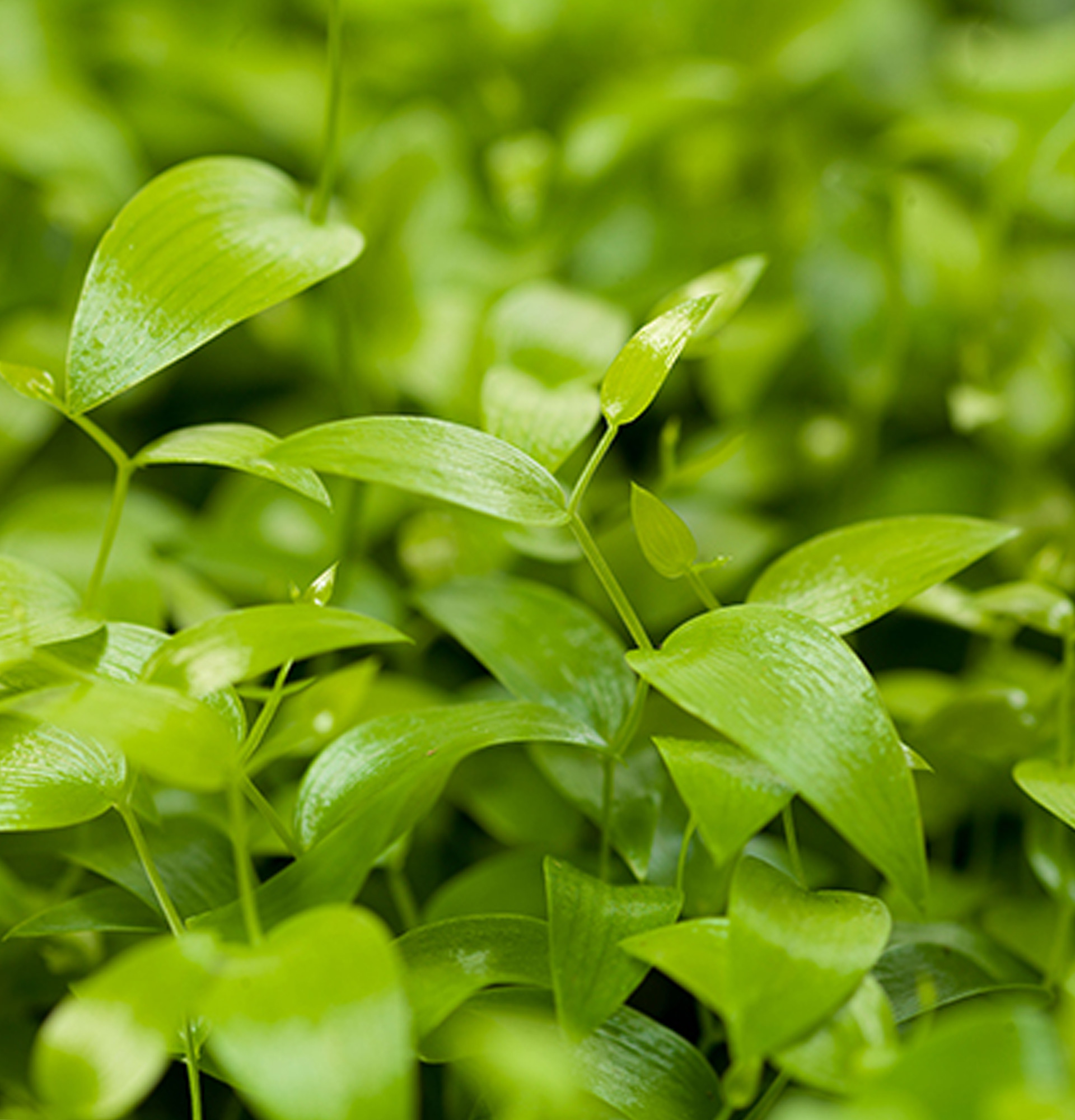 It is a tall, highly branched vine. The presence of evergreen oval cladodes, which have an absolute resemblance to foliage, completely distinguishes this variety from other asparagus. Cut branches are able to remain fresh, attractive for a long period of time, and this good quality is often used by florists in their masterpieces.
It is a tall, highly branched vine. The presence of evergreen oval cladodes, which have an absolute resemblance to foliage, completely distinguishes this variety from other asparagus. Cut branches are able to remain fresh, attractive for a long period of time, and this good quality is often used by florists in their masterpieces.
Asparagus home care
Having a beautiful indoor asparagus in your apartment is possible not only for experienced flower growers, but also for amateurs without experience. How to grow asparagus at home? Let's look at the points in detail. The main thing is to love your pet, take care of him, following all the rules of care with all the nuances and requirements inherent in this plant.
Choice of location and temperature
Hare chill wants bright lighting, but not for a long time, preferably the presence of the sun in the morning and in the evening. This can be achieved by placing the flowerpot on a window that faces east or west. With the onset of a warm off-season, indoor asparagus will feel great on a balcony, terrace or in the garden.
Protect asparagus from drafts, the scorching sun at noon and the presence of natural disasters.
The optimal summer temperature for hare eyes is 20-25˚С, and in winter it is not lower than 8˚С and not hotter than 15˚С. Deviation from these conditions can lead to the loss of decorative indicators of the flower.
Humidity and watering
Indoor asparagus desires high humidity in the surrounding space. This can be achieved by regularly spraying the flower. For this morning or evening procedure, which will help preserve the decorative properties of a houseplant, it is advisable to have rain or settled water. A preventive method of maintaining sufficient humidity in the room can be to install a vessel with water, or you can keep the stones wet in the pot tray. It makes sense to purchase flower pots with automatic watering.
During the growth period, abundant watering with an interval of two days will be a joy for the plant, in cool weather we reduce watering to four times a month.
Soil and its top dressing
The soil for asparagus should be slightly acidic. All-purpose soil can be purchased at the flower shop, intended for lemons. Inpidually, you can prepare the following earthen mixture, for this, take all the ingredients in equal quantities: soddy earth, leafy earth, coarse sand or perlite.
Regular application of complex soluble fertilizers with an interval of fourteen days will make your pet's life more comfortable. During active growth, it is useful to add fertilizers with the presence of nitrogenous compounds. In winter, reduce feeding to once a month.
Asparagus transplant
Until the age of five, the hare chill desires an annual spring transplant. The flowerpot must be taken with a hole and a little more than its predecessor. Rapidly growing asparagus roots are slightly shortened during transplantation.
A good drainage layer of expanded clay, small pebbles or broken bricks is required.
The transplant process must be completed with abundant watering. After seven days, it is advisable to fertilize.
Reproduction of asparagus
You can get young unpretentious houseplants of asparagus by piding the bush, apical cuttings and sowing seeds.
When transplanting in the spring, the asparagus rhizome can be pided and planted in different flowerpots. For a flower, this process is painful. Fertilizer can be applied to a regenerated plant.
You can use cuttings about 15 cm high for propagation. Having planted them in wet sand, you need to arrange a mini-greenhouse and put it in a bright place with temperatures of about 20 ° C. The root system will appear in a month and a half. Young seedlings are planted in flowerpots at a permanent place of deployment.
How to grow asparagus from seeds? It is difficult to obtain seeds at home, but they can always be purchased at a flower shop. It is necessary to sow the seeds in the spring in a moist substrate. Create greenhouse conditions and place the container in a well-lit area. The soil periodically needs to be moistened, maintain the temperature within 22˚С. In less than a month, young sprouts will appear. When the seedlings reach a size of about ten centimeters, they need to pe into separate cups. And the seedlings that have already grown up in the summer are planted in separate flowerpots.
Hare chill prefers clay pots.
Care rules will be identical to adult asparagus.
Pests and diseases
Asparagus is a hardy and strong culture. And only big flaws in caring for him can allow the appearance of a spider mite, a worm, a scale insect on it. Asparagus is not a chemical lover. When uninvited guests appear, immediately treat the flower with a solution of soap, onion or garlic husks. To kill pests, you can use alcohol to wipe the leaves.
Problem moments of cultivation
- Why does asparagus turn yellow? Perhaps the air in the room is too dry due to the high temperature; maybe the houseplant lacks feeding or lighting.
- Falling leaves of asparagus - the plant fell under a stream of direct sunlight; the flower is dark - it is necessary to rearrange the asparagus in a lighter place.
- Room hare chill grows too slowly - there are not enough nitrogen and iron compounds in the soil; regular top dressing of the soil with mineral fertilizers is the key to a healthy decorative plant appearance.
- Cropped asparagus does not grow - give your pet time, he will move away from the shock and new young shoots will appear. Trimmed stems will not grow.
Asparagus is not poisonous, but the toxicity is in its berries. If they appeared on the plant, precautions must be taken to prevent contact of the plant with animals and small children.
Purification of the adjacent air space, which is rich in heavy metals and harmful impurities, is a useful property of asparagus.
Fulfillment of all agrotechnical growing conditions will make it possible to admire a beautiful and bright plant.














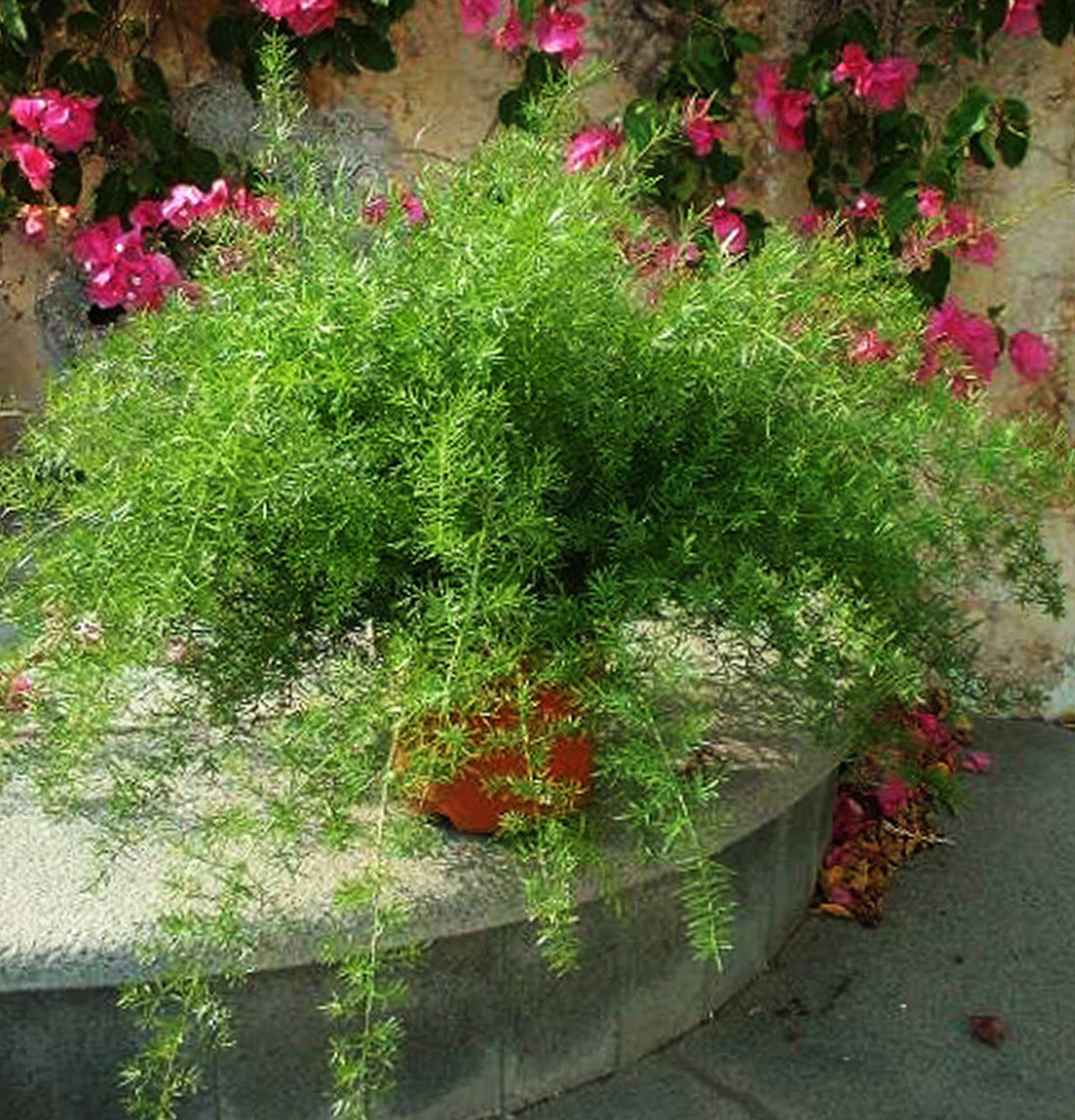
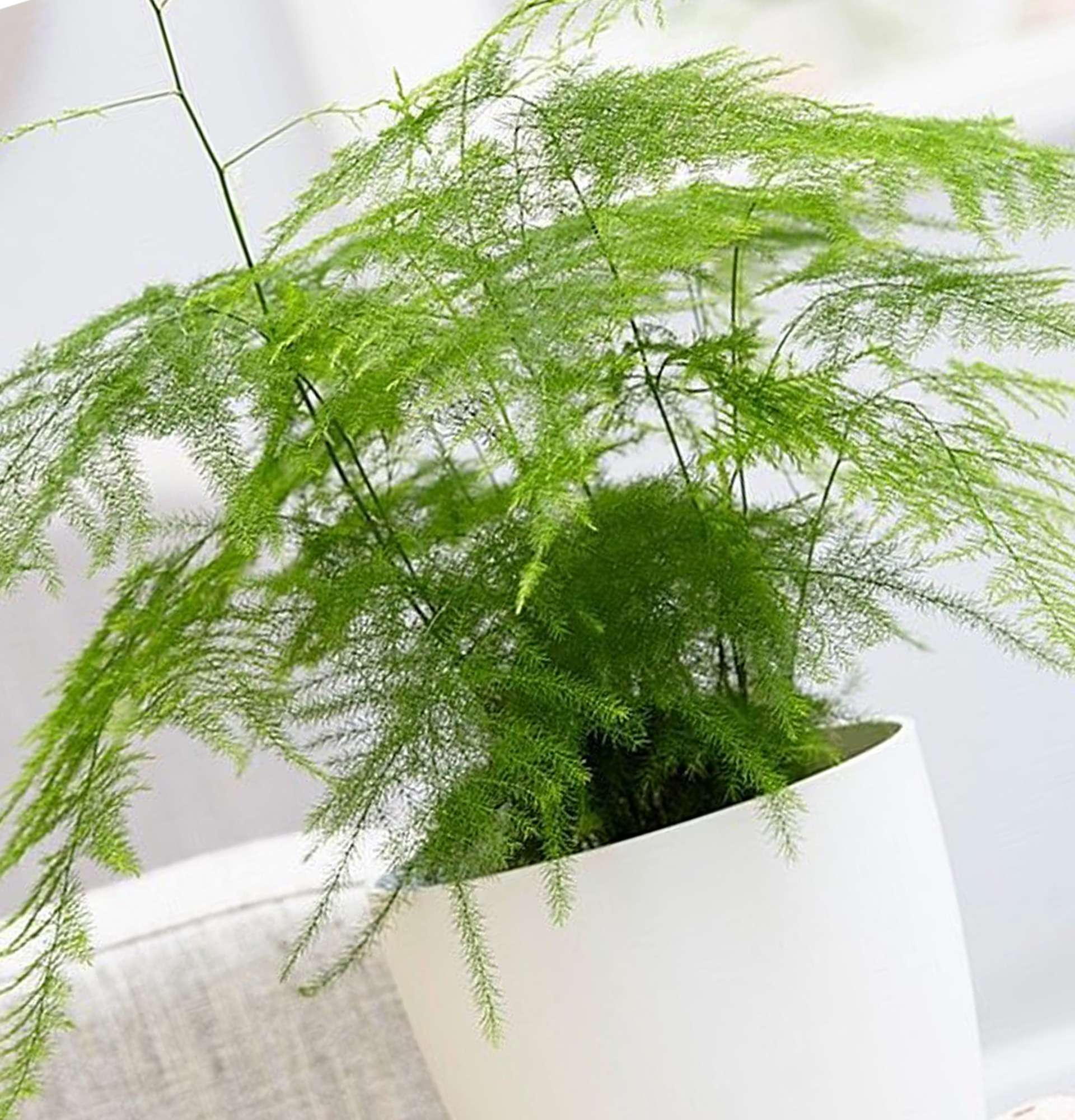
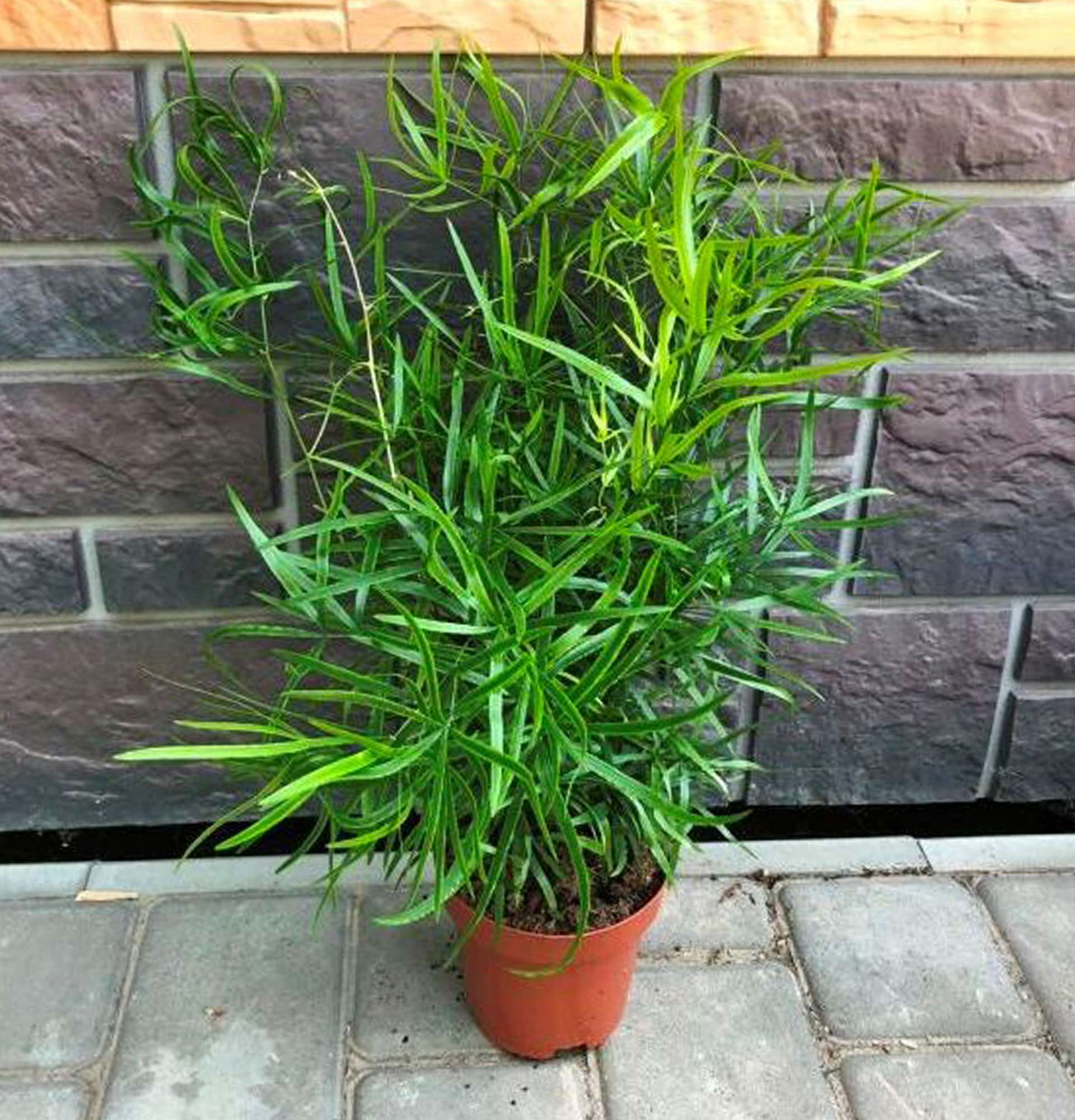
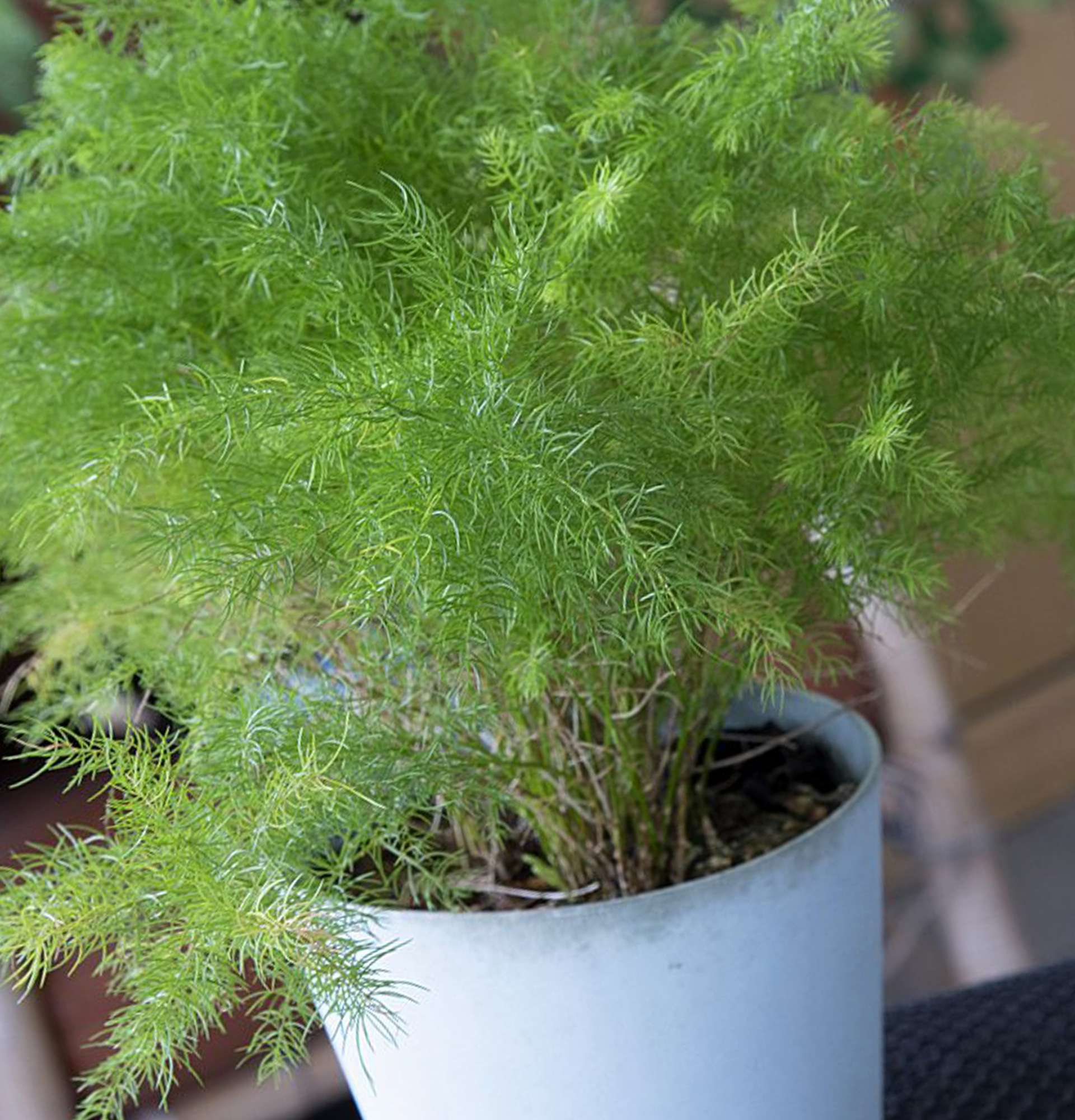
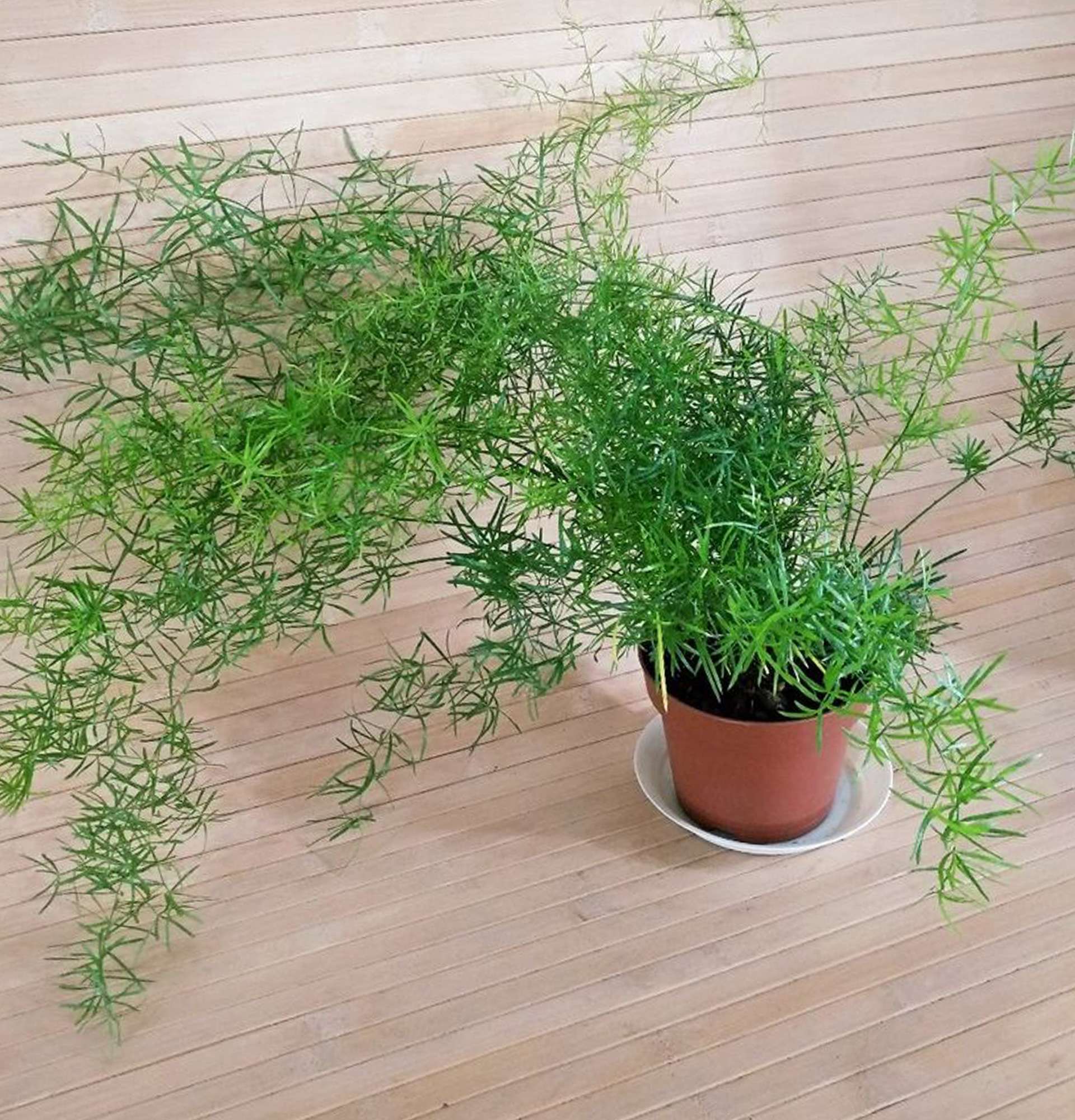
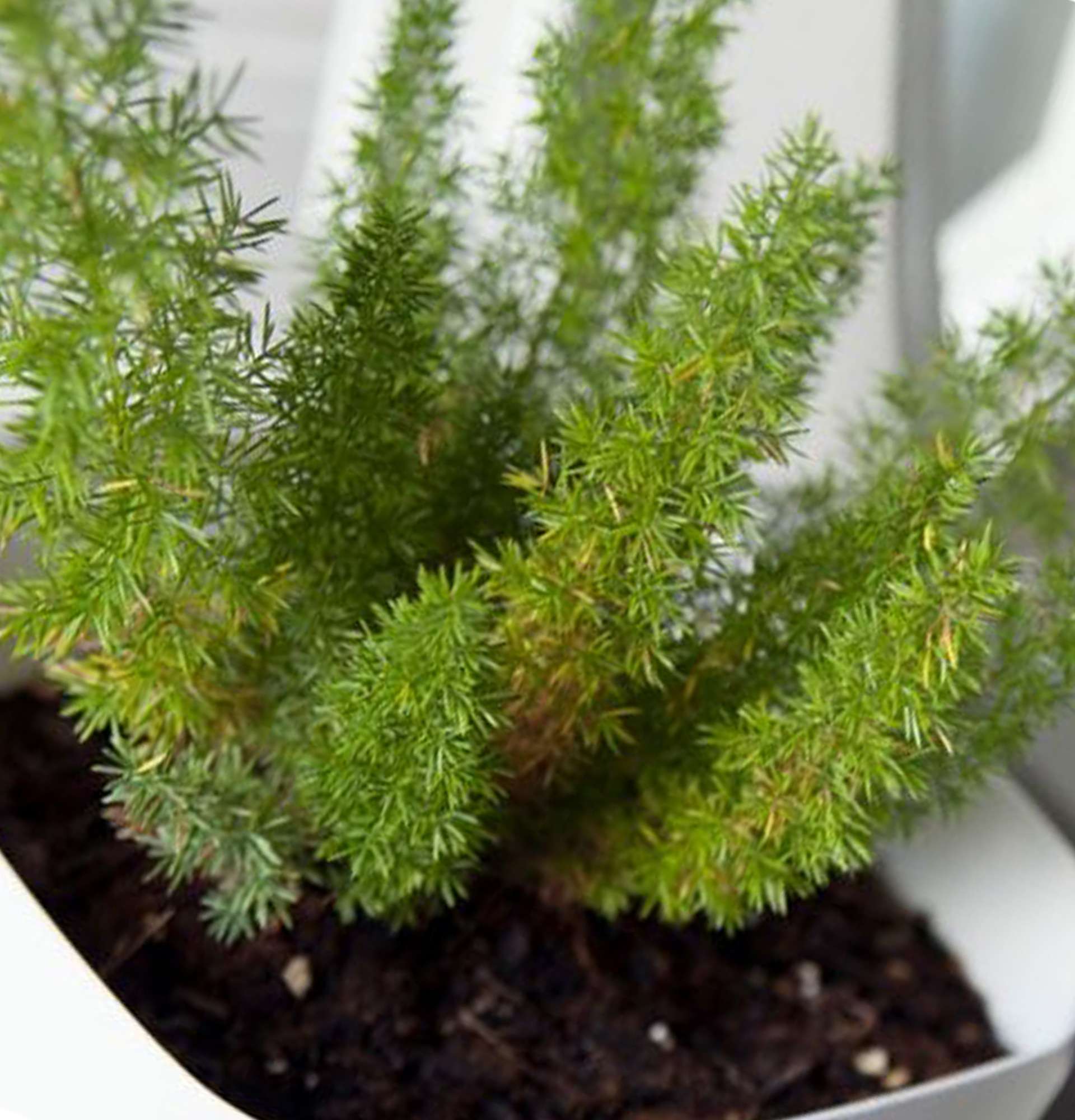
Write comments
Comments